 Pietro De Cristofaro (F540), Salvatore Todaro (F550), Umberto Grosso (F541), Licio Visintini (F546) 1963-65, active 1990s
Pietro De Cristofaro (F540), Salvatore Todaro (F550), Umberto Grosso (F541), Licio Visintini (F546) 1963-65, active 1990s

Background
 Following the disappointing Albatros-class corvettes, the Pietro de Cristofaros were designed as part of the major rebuilding program within the Marina Militare in the decades following the Second World War. Utilising the lessons learned from the previous class, the Cristofaros were designed as modern anti-submarine corvettes capable of escort and single-ship duties within the Mediterranean. The ships took their names from naval heroes from the Second World War, with the lead ship being named after Capitano di Fregata Pietro de Cristofaro who commanded the destroyer Luca Tarigo during the Battle of the Tarigo Convoy and was posthumously awarded the Medaglia d’oro al valor militare (Gold Medal of Military Valor).
Following the disappointing Albatros-class corvettes, the Pietro de Cristofaros were designed as part of the major rebuilding program within the Marina Militare in the decades following the Second World War. Utilising the lessons learned from the previous class, the Cristofaros were designed as modern anti-submarine corvettes capable of escort and single-ship duties within the Mediterranean. The ships took their names from naval heroes from the Second World War, with the lead ship being named after Capitano di Fregata Pietro de Cristofaro who commanded the destroyer Luca Tarigo during the Battle of the Tarigo Convoy and was posthumously awarded the Medaglia d’oro al valor militare (Gold Medal of Military Valor).
Design of the Pietro de Cristofaro Class
Hull and General Design
The general design of the Cristofaro class was based upon the previous Albatros-class, however Comitato Progetti Navi (Naval Projects Committee) took lessons learned from the previous class to improve upon its capabilities. The most obvious retained feature is the cutter bow, which was successful in assisting with seakeeping within the Mediterranean. They also retained the square transom stern, which was helpful in balancing the weight of the various pieces of anti-submarine hunting equipment. The class also retained the welded hardened steel construction of the Albatros-class and also retained the lack of portholes on the hull, except for three that were placed on the side so better ventilation of officers’ quarters. Lacking the signature quarterdeck of the Albatrosses, instead these ships had a large three storey superstructure (in relation to their size) that extended from the forecastle to just behind the aft main gun turret.
The lowest storey acted as the replacement to the quarterdeck, which contained the officers’ and petty officers’ quarters in the forward section as well as the galleys, the laundry rooms and the medical bay. The remaining two stories of the structure were the locations of the main command functions of the ship: on the highest deck was the command bridge and deckhouse as well as the radio station and radar room. The CIC and anti-submarine command centre’s exact location are not described, however they likely were on the second deck along with the captain’s quarters. Just forward of the aft Menon ASW turret was the exhaust stack and an optical director station.
The ships were an overall length of 80.25 m, had a beam of 10.25m and a draft of 2.72m. They had a regular displacement of 835 tons and a fully-loaded displacement of 940 tons. The full crew compliment was 10 officers and 118 NCOs and enlisted.
Crew Accomodations
While the officers and captain were housed in the three-storey superstructure, the enlisted crew remained belowdecks in four separate rooms. The first room was in the bow and the remaining three were situated at the stern of the ship. There were also more NCO accomodations below deck that were spread throughout the hull. The crew did enjoy some comforts, such as air-conditioning, anti-acoustic and “anti-heat” coverings in their berths. A benefit to being an officer aboard a Cristofaro class was the access to hot showers that even included electrical connections for appliances such as razors.
Powerplant
The ships were equipped with two FIAT 3012 “RSS” diesel engines, except for Visintini who instead had TOSI diesel engines. These engines were capable of producing 8300 HP and propelling the ship to a maximum speed of 23 knots (42.6 kph), which was faster than their predecessors but still not spectacularly fast. Both engines were situated under the under the funnel and just forward of the Menon launcher’s ammunition magazine, with each being attached to a single shaft that connected to a four bladed propeller. At full speed, the ships had a range of 1521 nm (2816 km) but at a more modest speed of 15.9 knots had a range of 5534 nm (9880 km). The ships were also equipped with three “MB836” diesel generators, which produced a total of 200 kW.
Equipment
As of their commissioning, the ships were equipped with a fire control and surface/air search radar as well as sonar equipment for hunting submarines. While the main surface/air search radar’s model is unknown, albeit the range was ~90 km, the main guns were slaved to the Selenia O.G.-3 “electrical control unit” which was also connected to an Orion (RTN-10X) fire-control radar. The hull sonar was the American-based SQS-36 that was also located on the stern as part of a variable-depth sonar that was attached to a towed array.
The ships were also designed with nuclear attacks in mind, being equipped with decontamination systems and a pressure system that would pressurise the internal compartments to prevent the entrance of radioactive material. Every internal portion of the ship was entirely accessible without the need to go out on deck, however if it was necessary there were measurement systems throughout the ship to measure external radiation. Every system of the ship was also given the option of operating entirely automatically and remotely, further assisting with operation in radioactive environments.

Src unknown, via war thunder forum
Armament
OTO 76/62 “Allargato”
The primary armament of the Christofaro class was the OTO 76/62 “Allargato,” which was the replacement for the failed SMP-3 mount that had been employed on the Albatros-class. This gun did not directly replace the SMP-3, as OTO had developed a mount for the Centauro-class which had the unique feature of having two guns situated in which one was directly above the other. This mount was named the Sovrapposto, but was found to be complicated and unsatisfactory, leading to the further development of a single mount that would become the Allargato.
While using a completely different turret, this mount retains the same mechanism behind its operation. Unlike the SMP-3 which only had 14 rounds within its drum magazine and required the gun barrel to fully elevate to 90 degrees in order to reload, the Allargato has “oscillating arms” that continuously “grab” rounds from a feed magazine and transports them to a feed tray that follows an “articulated parallelogram trajectory” to successfully ram the shell into the breech.
In summary, this system is able to retain a constant rate of fire without the need for resetting the location of the barrel due to the inclusion of the oscillating mechanism carefully tuned to the gun barrel until the entire magazine is depleted. When it came to the magazine itself, this mount greatly improved upon the Sovrapposto due to the inclusion of a 43 round magazine instead of the 11-round one found in the former.
The Allargato was capable of up to 60 rounds per minute and an elevation of up to 85 degrees.
Anti-Submarine Weaponry
The most notable anti-submarine weapon on the class was the large Menon turret situated in the X position aft of the exhaust stack. The Menon was a common weapon within the Marina Militare during the Cold War, being mounted mainly on destroyers, frigates and corvettes for usage against submarines. Unlike the well-known American ASROC, which fired rocket propelled depth charges, the Menon instead was simply a mortar that fired the depth charges up at a variable range based on the pressure chosen before firing.
While there was a triple barrel variant, which was seen on classes such as the Centauro, the Cristofaro-class was equipped with the single-barrel version. The turret was fed ammunition by a belt within the magazine that would feed charges into a tube that would bring it to the mortar. The ships were also equipped with the American Mk. 32 SVTT anti-submarine torpedo launchers, which were associated on either side of the superstructure near the Menon turret. While not weaponry, the ships’ hulls were connected to a degaussing system to reduce their magnetic field and improve survivability in minefields.
Careers of the Ships
Like many frigates and corvettes of the Marina Militare in the Cold War, the Cristofaro class was mainly used for patrol, surveillance and training duties. Not much is known about the ships between the 70s and modern day, however some members of the class were spotted on satellite photos.
 Pietro de Cristofaro – “Usque ad finem et ultra”
Pietro de Cristofaro – “Usque ad finem et ultra”
Lead ship of the class, she was named after Capitano di Fregata Pietro de Cristofaro, hero of the Battle of the Tarigo Convoy who led his destroyer while defending his convoy solo against four British destroyers. The Tarigo would be sunk, taking de Cristofaro and most of the crew with her but not before sinking one of the opposing destroyers HMS Mohawk. He would be posthumously awarded the Medaglia d’oro al valor militare for his actions. This ship was laid down on April 30, 1963 and constructed at the Cantieri Navali del Tirreno until May 29, 1965. She would then be towed to Genoa for fitting out and sea trials before finally commissioning into the Marina Militare in December of that year. From that point forward she was assigned to the Flottiglia della Scuola Comando (Command School Flottila), similar to all of the units of the Albatros-class, however, unlike those ships she would be the centre of an incident off the coast of Libya.
During the 1970s, the class was often used in support of Italian fishermen and enforcing Italian fisheries within the Mediterranean. This support was necessary due to the common threat of seizure by the navies of the North African nations, such as Libya, who claimed that the fishing boats trespassed into their waters. In September of 1972, Cristofaro was sent out from her homeport of Augusta to assist with boats near Libya and made contact with said boats on the 21st about 20 miles off of the coast. At first, everything seemed to be business as usual until 10:20 when a Mirage at an altitude of 800 metres made a pass of the ship. This was only the first of many overflights, with three more Mirages doing the same over the course of the next few hours. It would not be until the fourth flight when a Mirage fired bursts of shells at the ship, hitting the starboard side and injuring two sailors.
Immediately calling for battlestations, the ship’s commander Capitano di corvette Franco Barbalonga also ordered the fishing boats to evacuate the area. A few hours later at 16:52 another aircraft would strafe the ship from the opposite side and hit the ship in the superstructure and one of the Allargato mounts, wounding two more sailors. When it was obvious that the aircraft was turning around for another strafing run, the aft Allargato mount was used to fire three shots at the incoming aircraft and was able to score close enough bursts that the plane pulled out of the attack.
While the attacking Mirage appeared to return to base, there was still another that was keeping its distance but still remained in the area. Upon notification of the attack, multiple units were scrambled out of Italy to provide assistance to Cristofaro. On the 22nd, the corvette Salvatore Todaro, the destroyers Fante and Geniere, frigate Fante and the cruiser Vittorio Veneto arrived on scene and allowed for Cristofaro to return to Italy. Despite being approached by more Libyan aircraft, no further attacks occurred and the Libyan government formally apologised for the attack.
The ship was decommissioned in 1994.
 Umberto Grosso – “Tacite sed fortiter”
Umberto Grosso – “Tacite sed fortiter”

Laid down at the same time as her sister Salvatore Todaro at Ansaldo – Livorno in 1962, the ship named after Umberto Grosso, an officer aboard the heavy cruiser Zara during the Battle of Cape Matapan. Grosso was awarded the Medaglia d’oro al valor militare for his actions during the battle, where he triggered the explosive charges in the ammunition magazines that destroyed the ship in order to prevent capture. Grosso was launched two months following Todaro on December 12, 1964 and was towed to La Spezia for fitting out. She was commissioned in April of 1966 and then was assigned to the IV Gruppo della II Divisione Navale (4th Group of the 2nd Naval Division). Grosso would operate within the fishery protection mission and other parts of the Marina Militare until she was decommissioned in 1994.
 Salvatore Todaro – “Osare l’inosabile”
Salvatore Todaro – “Osare l’inosabile”
Built alongside her sister Grosso at Ansaldo – Livorno, the ship was named after famed submariner Salvatore Todaro who was the commander of the submarine Comandante Cappellini and part of the Decima Flottiglia MAS during WWII. Todaro was killed during a strafing attack on the trawler Cefalo and was posthumously awarded the Medaglia d’oro al valor militare. Commissioning in April of 1966, she would be assigned to the II Gruppo della II Divisione Navale and would serve between the main Marina Militare and the Flottiglia della Scuola Comando until being decommissioned in 1994.
 Licio Visintini – “Sufficit Animus”
Licio Visintini – “Sufficit Animus”

The final ship of the class, Licio Visintini was laid down at the CRDA yards in Monfalcone on May 30 1965 and commissioned in August of 1966. The ship was named after the Decima Flottiglia MAS member who operated in the area around Gibraltar, operating the famed Italian manned torpedoes. Visintini and his partner Giovanni Magro were killed by depth charges in 1942 when on a mission to mine the battleship HMS Nelson and was posthumously awarded the Medaglia d’oro al valor militare. The ship was assigned to the Flottiglia della Scuola Comando following commissioning, however her life following this assignment is unclear. She would be decommissioned in 1994.
Read More
Michele Cosentino, Maurizio Brescia, La Marina italiana 1945-2015 – Parte 2ª 1971-1996, Storia Militare s.r.l. 2014
Giuliano da Frè, Le forze armate libiche (PDF), in I Documenti di Analisi Difesa, n. 68, giugno 2006.
https://it.wikipedia.org/wiki/Classe_Pietro_De_Cristofaro
https://svppbellum.blogspot.com/2019/01/marina-militare-italiana-le-corvette_11.html
https://web.archive.org/web/20110313163200/http://cca.analisidifesa.it/downloads/1824313278_it.pdf
https://web.archive.org/web/20071030005540/http://www.paginedidifesa.it/2002/tani_020722.html
https://www.seaforces.org/marint/Italian-Navy/Corvette/F-540-ITS-Pietro-de-Cristofaro.htm
https://www.navypedia.org/ships/italy/it_es_pietro_de_cristofaro.htm
https://www.battleships-cruisers.co.uk/de_cristofaro_class.htm
https://www.worldnavalships.com/de_cristofaro_class.htm
https://forum.warthunder.com/t/de-cristofaro-class-corvette-pietro-de-cristofaro-f540/15600
https://www.marina.difesa.it/cosa-facciamo/storia/la-nostra-storia/medaglie/Pagine/Decristofaropietro.aspx
https://www.marina.difesa.it/noi-siamo-la-marina/pilastro-operativo/mezzi/mezzi-storici/Pagine/ABCD/de_cristofaro.aspx


 Latest Facebook Entry -
Latest Facebook Entry -  X(Tweeter) Naval Encyclopedia's deck archive
X(Tweeter) Naval Encyclopedia's deck archive Instagram (@navalencyc)
Instagram (@navalencyc)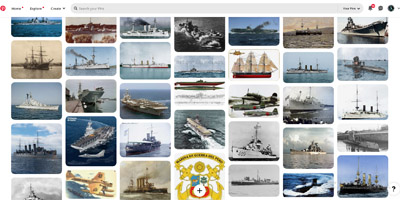

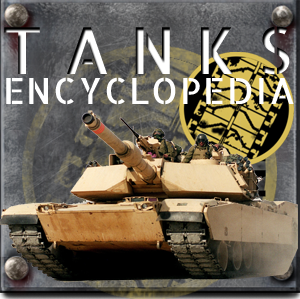
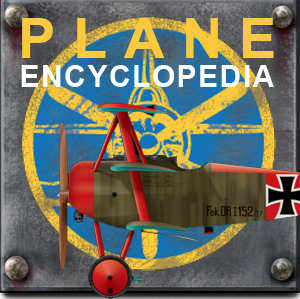
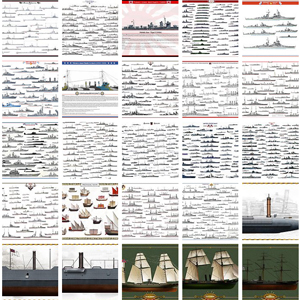
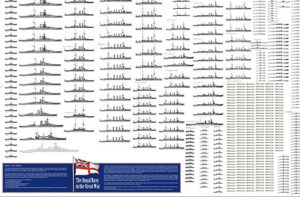
 French Navy
French Navy Royal Navy
Royal Navy Russian Navy
Russian Navy Armada Espanola
Armada Espanola Austrian Navy
Austrian Navy K.u.K. Kriegsmarine
K.u.K. Kriegsmarine Dansk Marine
Dansk Marine Nautiko Hellenon
Nautiko Hellenon Koninklije Marine 1870
Koninklije Marine 1870 Marinha do Brasil
Marinha do Brasil Osmanlı Donanması
Osmanlı Donanması Marina Do Peru
Marina Do Peru Marinha do Portugal
Marinha do Portugal Regia Marina 1870
Regia Marina 1870 Nihhon Kaigun 1870
Nihhon Kaigun 1870 Preußische Marine 1870
Preußische Marine 1870 Russkiy Flot 1870
Russkiy Flot 1870 Svenska marinen
Svenska marinen Søværnet
Søværnet Union Navy
Union Navy Confederate Navy
Confederate Navy Armada de Argentina
Armada de Argentina Imperial Chinese Navy
Imperial Chinese Navy Marinha do Portugal
Marinha do Portugal Mexico
Mexico Kaiserliche Marine
Kaiserliche Marine 1898 US Navy
1898 US Navy Sovietskiy Flot
Sovietskiy Flot Royal Canadian Navy
Royal Canadian Navy Royal Australian Navy
Royal Australian Navy RNZN Fleet
RNZN Fleet Chinese Navy 1937
Chinese Navy 1937 Kriegsmarine
Kriegsmarine Chilean Navy
Chilean Navy Danish Navy
Danish Navy Finnish Navy
Finnish Navy Hellenic Navy
Hellenic Navy Polish Navy
Polish Navy Romanian Navy
Romanian Navy Turkish Navy
Turkish Navy Royal Yugoslav Navy
Royal Yugoslav Navy Royal Thai Navy
Royal Thai Navy Minor Navies
Minor Navies Albania
Albania Austria
Austria Belgium
Belgium Columbia
Columbia Costa Rica
Costa Rica Cuba
Cuba Czechoslovakia
Czechoslovakia Dominican Republic
Dominican Republic Haiti
Haiti Hungary
Hungary Honduras
Honduras Estonia
Estonia Iceland
Iceland Eire
Eire Equador
Equador Iran
Iran Iraq
Iraq Latvia
Latvia Liberia
Liberia Lithuania
Lithuania Mandchukuo
Mandchukuo Morocco
Morocco Nicaragua
Nicaragua Persia
Persia San Salvador
San Salvador Sarawak
Sarawak Uruguay
Uruguay Venezuela
Venezuela Zanzibar
Zanzibar Warsaw Pact Navies
Warsaw Pact Navies Bulgaria
Bulgaria Hungary
Hungary

 Bundesmarine
Bundesmarine Dutch Navy
Dutch Navy Hellenic Navy
Hellenic Navy Marina Militare
Marina Militare Yugoslav Navy
Yugoslav Navy Chinese Navy
Chinese Navy Indian Navy
Indian Navy Indonesian Navy
Indonesian Navy JMSDF
JMSDF North Korean Navy
North Korean Navy Pakistani Navy
Pakistani Navy Philippines Navy
Philippines Navy ROKN
ROKN Rep. of Singapore Navy
Rep. of Singapore Navy Taiwanese Navy
Taiwanese Navy IDF Navy
IDF Navy Saudi Navy
Saudi Navy Royal New Zealand Navy
Royal New Zealand Navy Egyptian Navy
Egyptian Navy South African Navy
South African Navy






























 Ukrainian Navy
Ukrainian Navy dbodesign
dbodesign